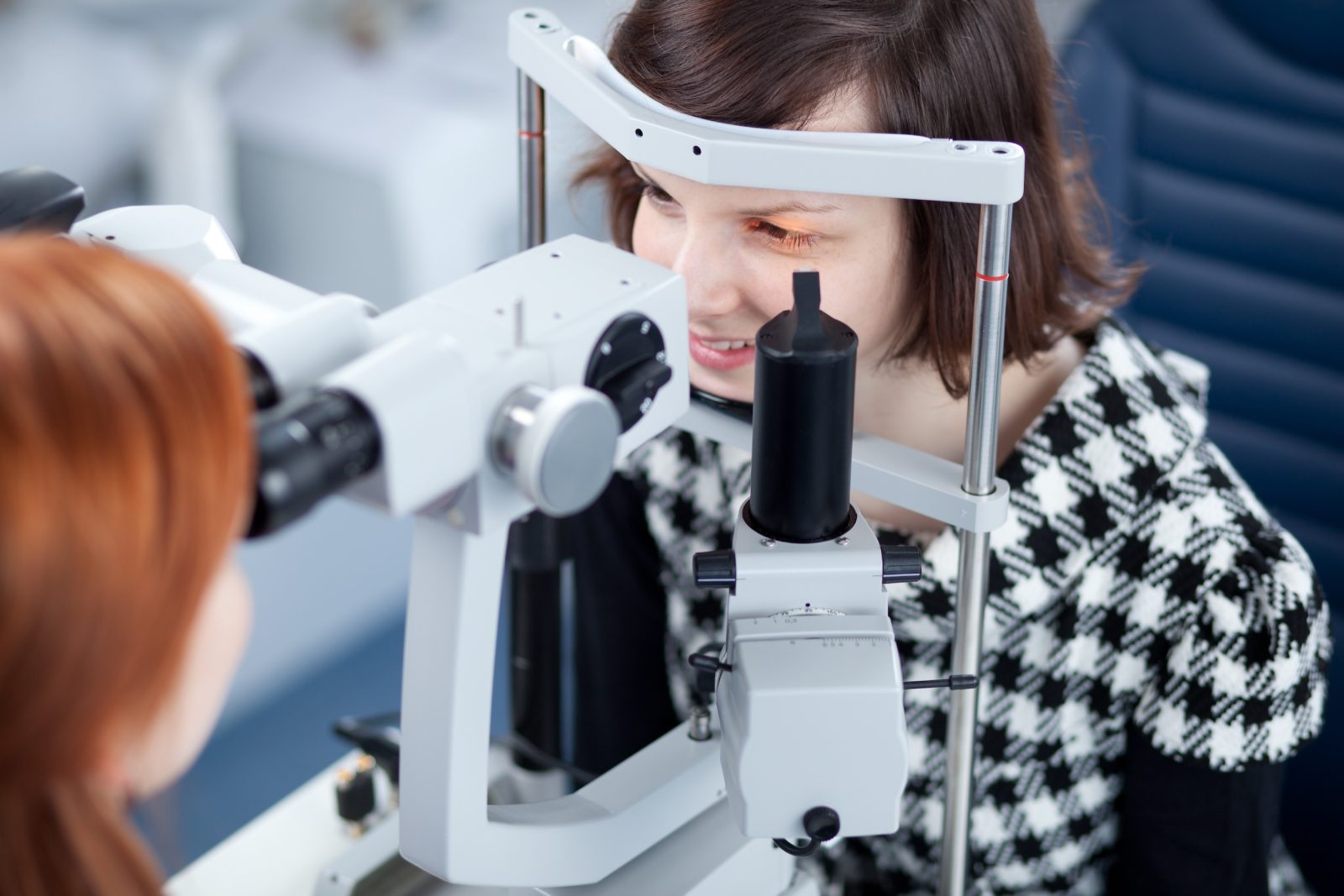- 1990: The excimer laser, critical for performing LASIK surgery, is first used outside the United States. This technology allows for precise removal of corneal tissue, laying the groundwork for LASIK.
- 1995: The FDA approves the first excimer laser for PRK (photorefractive keratectomy) for myopia, marking the beginning of laser vision correction in the United States.
- 1998: The FDA approves the first excimer laser for LASIK to correct myopia, officially bringing LASIK surgery to patients in the United States.

LASIK and the FDA: A Comprehensive Overview
LASIK surgery, a revolutionary procedure that has transformed the lives of millions by offering a permanent alternative to glasses or contact lenses, continues to be a subject of interest. At its core, LASIK (Laser-Assisted In Situ Keratomileusis) is a type of refractive surgery for the correction of myopia (nearsightedness), hyperopia (farsightedness), and astigmatism.
LASIK Eye Surgery and the FDA
LASIK (Laser-Assisted In Situ Keratomileusis) eye surgery falls under the category of medical devices because it involves the use of an excimer laser to reshape the cornea of the eye to correct vision problems such as myopia (nearsightedness), hyperopia (farsightedness), and astigmatism. According to the FDA: “The FDA continues to ensure patients and physicians have access to current and accurate information on (Laser-Assisted In Situ Keratomileusis) LASIK”.
Is LASIK Approved by the FDA?
Yes, LASIK (Laser-Assisted In Situ Keratomileusis) eye surgery equipment is approved by the U.S. Food and Drug Administration (FDA). The FDA first approved the excimer laser, a crucial technology used in LASIK procedures, for performing photorefractive keratectomy (PRK) for myopia in 1995. Following this, in 1998, the FDA approved the use of the excimer laser specifically for LASIK to correct myopia (nearsightedness). Since then, the FDA has approved the use of various excimer lasers for LASIK to also treat hyperopia (farsightedness), astigmatism, and mixed astigmatism, expanding the procedure’s applicability to a broader range of vision impairments.
The FDA’s approval process for LASIK involves rigorous testing and evaluation of the lasers and techniques to ensure they are safe and effective for patient use. This includes clinical trials that demonstrate the procedure’s efficacy and safety, as well as the monitoring of post-market performance to ensure long-term safety. The FDA also oversees the labeling and promotion of LASIK devices to ensure that patients receive accurate and comprehensive information about the risks and benefits of the procedure.
The Role of the FDA
The FDA’s involvement in LASIK surgery is multifaceted, focusing on the approval of the lasers used for the surgery, setting standards for safety and efficacy, and monitoring post-market performance. Before any LASIK laser receives FDA approval, it must undergo rigorous testing in clinical trials to demonstrate its safety and effectiveness. These trials are designed to assess the potential risks and benefits of the laser, ensuring that it performs as intended and that the benefits outweigh the risks for patients.
LASIK & FDA Timeline
The timeline of FDA involvement in LASIK surgery underscores the evolution of a procedure that has become a mainstay in refractive vision correction. From the initial approval of the excimer laser for myopia in the late 1990s to the latest updates studies aimed at improving patient outcomes, the FDA’s role has been helpful in ensuring the safety, efficacy, and ongoing improvement of LASIK surgery.
- 2000: FDA approves LASIK for hyperopia (farsightedness) and astigmatism, expanding the range of vision impairments that can be treated with the procedure.
- 2002: The FDA initiates a post-market surveillance study to monitor the long-term safety and effectiveness of LASIK surgery.
- 2006: Wavefront-guided LASIK receives FDA approval, introducing a more customized approach to LASIK that addresses unique imperfections in the eye’s optics.
- 2012: The FDA, National Eye Institute (NEI), and the Department of Defense (DoD) launch the Patient-Reported Outcomes with LASIK (PROWL) studies to better understand patient satisfaction and the quality of life following LASIK surgery.
- 2016: Results from the PROWL studies are published, providing valuable insights into patient experiences with LASIK, including the prevalence of visual symptoms and their impact on daily activities.
Platforms like the FDA and LASIK.com have played a vital role in educating patients and supporting surgeons in delivering high-quality care in line with FDA regulations. This partnership between regulatory oversight and professional practice continues to benefit millions seeking clearer vision through LASIK.
LASIK.com Network and The FDA
Many members of the LASIK.com Network were actually involved in helping the FDA approve LASIK Eye Surgery in the United States. A partner of the LASIK.com Network, LasikPlus, was the very first laser vision correction procedure performed in the U.S. following the FDA trials.The LASIK.com Network has been proud to partner with some of the most experienced LASIK Surgeons in the United States some of which were the original investigators for the FDA clinical trials for laser vision correction.
Commitment to Patient Care
The LASIK.com Network’s dedication to patient care is evident in its approach to education and support. By offering a platform for patients to learn about LASIK surgery, ask questions, and find qualified surgeons, LASIK.com ensures that individuals are well-informed and comfortable with their decision to undergo the procedure. This patient-first mentality extends to the Network’s collaboration with the FDA, where ensuring patient safety and satisfaction is a shared priority.
Moreover, the Network actively encourages feedback from patients and practitioners to continually improve the LASIK experience. This feedback loop not only helps to enhance patient care but also contributes to the body of knowledge that the FDA can use to refine its regulations and guidelines.
The Significance of Board Certification
Board certification is awarded to physicians who have met specific requirements set by a recognized medical board in their specialty. For LASIK surgeons, this typically involves certification by the American Board of Ophthalmology or an equivalent body. Achieving this status requires completing rigorous training, passing comprehensive exams, and demonstrating proficiency in the latest techniques and technologies in eye care and surgery.
For patients, a surgeon’s board certification serves as a key indicator of quality. It assures them that the surgeon has undergone extensive training and evaluation, and is committed to continuing education and adherence to stringent professional standards. This level of assurance is crucial when it comes to a procedure as delicate and impactful as LASIK surgery.
LASIK.com and the LASIK.com Network recognize the importance of board certification in ensuring the quality and safety of LASIK surgery. The platform emphasizes the necessity for patients to seek out board-certified surgeons for their LASIK procedures. This commitment is reflected in the information and resources provided on the site, which often highlight the significance of choosing a surgeon with the appropriate credentials and certifications.
The LASIK.com Network ensures that its directory includes only those surgeons who have achieved board certification. This vetting process is part of the Network’s dedication to prioritizing patient care and aligning with FDA recommendations and industry best practices. By making board certification a requirement for inclusion, LASIK.com facilitates a connection between patients and highly qualified surgeons, thereby enhancing the overall quality of care and patient outcomes.
About the LASIK.com Network
The LASIK.com goal aligns with the FDA to provide reliable information and patient support in the landscape of refractive surgery.

LASIK.com goals is to provide reliable information and patient support in the landscape of refractive surgery. The website and its associated network are dedicated to providing comprehensive resources about LASIK surgery, including detailed explanations of the procedure, its benefits and risks, and what patients can expect before, during, and after surgery. The LASIK.com Network is composed of a wide range of professionals, including ophthalmologists, optometrists, and LASIK surgeons, all committed to the highest standards of patient care.
Sources
- Solomon, R., Donnenfeld, E. D., Perry, H. D., & Doshi, S. J. (2009). LASIK world literature review: quality of life and patient satisfaction. Ophthalmology, 116(4), 691-701.
- American Academy of Ophthalmology (AAO). (2021). LASIK: Safety Profile.
- Randleman, J. B., & Stulting, R. D. (2008). Corneal ectasia after LASIK: screening, diagnosis, and treatment. The Ocular Surface, 6(3), 154-167.
- Lindstrom, R. L. (2002). LASIK: Techniques and complications. In Ophthalmic Surgery: Principles and Practice (Vol. 1, pp. 521-541). Saunders.
- Kim, T. I., Alió del Barrio, J. L., Wilkins, M., Cochener, B., & Ang, M. (2019). Refractive surgery. The Lancet, 393(10185), 2085-2098.
- American Society of Cataract and Refractive Surgery (ASCRS). (2021). LASIK Patient Information.
- Hersh, P. S., Lahrach, M. A., Brint, S. F., & Maloney, R. K. (2016). Long-term Outcomes after LASIK. Journal of Cataract and Refractive Surgery, 42(3), 453-462.
- U.S. Food and Drug Administration (FDA). (2021). LASIK: Approved Devices.